
1920–2020 Prague–Tokyo / influences, parallels, a sense of commonality
1920–2020 Prague–Tokyo / Exchanges, Parallels, Common Visions
The Jaroslav Fragner Gallery prepared an extensive project mapping a century of architectural dialogue between Japan and the Czech Republic
From today, the Jaroslav Fragner Gallery invites you to its first exhibition of the year, accompanied by an extensive publication titled 1920–2020 Prague–Tokyo / influences, parallels, intuitions of the common. Currently, the exterior part of the exhibition is open to the public in the courtyard of the Bethlehem Chapel, which can be visited every day from 10 AM to 7 PM. The exhibition presents dozens of models, photographs, and works of art, including many unique pieces, and a variety of Japanese authors who have not yet been exhibited in the Czech Republic, as well as Czech authors whose buildings were realized directly in Japan or whose work was significantly influenced by Japanese architecture. For example, the exhibition features a replica model of the famous pavilion for Expo 1970 in Osaka by architects Viktor Rudiš, Vladimír Palla, and Aleš Jenček. The exhibition also recalls the work of architect of Czech origin Antonín Raymond, who is considered one of the founders of modern architecture in Japan, as well as the progressive utopian visions of the 60s that inspired many architects in our country. Also noteworthy is the industrial palace by Jan Letzel built at the beginning of the last century in Hiroshima, the remnants of which, reminiscent of events at the end of World War II, are known as the "Atomic Dome."
A tea pavilion designed by Jakub Fišer was also created for the exhibition, and artistic works by Patrik Hábl, Jindřich Zeithamml, Michal Cihlář, Marek Thér, Veronika Richterová, and Epos 257 are on display. The interior part of the exhibition at the Jaroslav Fragner Gallery will be accessible as soon as the epidemic situation allows. An integral part of the exhibition, which is also to be presented in Japan in collaboration with the Czech Centre in Tokyo, will be a freely accessible short online video documentary showcasing the exhibition and specific works presented by the authors themselves.
Alongside the opening of the exhibition, a comprehensive Czech-English catalog will be published, featuring contributions from over twenty Czech and Japanese historians, theorists, and architects who, in addition to architecture, also focus on connections in the fields of fine and applied arts or landscape creation.
The Jaroslav Fragner Gallery has been long interested in Japanese architecture, most recently highlighted in an exhibition dedicated to prominent Japanese architect Kengo Kuma. Earlier exhibitions included personalities such as Furuichi Tetsuo, Antonín Raymond, and Atelier Bow-Wow. The project was prepared as part of the celebrations marking the 100th anniversary of relations between Japan and the Czech Republic and is held under the patronage of Tomáš Petříček, the Minister of Foreign Affairs of the Czech Republic, and the honorary patronage of the Embassy of Japan in the Czech Republic. The exhibition will run until June 13, 2021. Information about the accompanying program will be updated on the website and Facebook.
Although contacts between Japan and the Czech lands began as early as the pre-modern period, significantly supported by the international phenomenon of "Japonisme," the intensive interest in the architecture of both countries began in the 1920s. Two years after the establishment of the independent republic, official diplomatic relations were established, continuing significant contacts from the 19th century (for example, chargé d'affaires Heinrich Coudenhove-Kalergi, who resided with his wife Mitsuko at the castle in Poběžovice). At that time, there was systematic research into Japanese architecture on one side and mapping the Czech architectural scene by Japanese architects on the other. Like many other historical genealogies in our history, the Czech-Japanese relations were interrupted and then renewed. The exhibition, particularly the publication, approaches the topic critically, capturing influence as a reciprocal phenomenon; in this sense, the exhibition may even have a decolonizing character, as it exposes the problem of stereotypes and disinformation while also giving space to both sides in as much balance as possible. The exhibition's concept consciously turned away from tracing a linear chronology of events. We adhere to chronological sequences only suggestively in the concept. Instead of a panorama of history, it interrogates several significant themes, such as Japanese aesthetics or the phenomenon of glass. This framework allowed for the selection and exhibition of a group of avant-garde architects from both the past and the present. Many Japanese authors will be exhibiting in the Czech Republic for the first time. This thematic approach also allowed for the application of a range of nuances that we can capture if we thoroughly study the historical relationship between both countries: from friendship and strong mutual influence to subtle intuitions of the common.
The publication presents architecture over the course of the entire century on 300 pages, from Japanese buildings by Jan Letzel, Bedřich Feuerstein, and notably Antonín Raymond, who is recognized as one of the founders of modern architecture in Japan, to current works by the young generation. Readers will become familiar with the reflections of Japanese work in Czech avant-garde, the influence of the Katsura villa in the post-war period, the urban development of Japanese metropolises, utopian visions of superstructures towering over cities from the 1960s, the relationship to art, or attitudes towards traditional architecture, regionalism, and sustainability. Space is also devoted to the successful Czechoslovak pavilion at Expo 70 in Osaka, the significance of glass art, the reflection of Japanese gardens, as well as the aesthetics and architecture of the tea ceremony, heritage preservation, or the specific understanding of ma space. The listed thematic areas are accompanied by a number of reproductions of artworks and photographs by Czech and Japanese authors. Several chapters, conceived as interviews with architects and theorists, such as an exclusive interview with Fujimori Terunobu and Vladimír Šlapeta, may be of interest to readers. The authors of other thematic chapters include Helena Čapková, Vlasta Čiháková Noshiro, Milan Hlaveš, Kuma Kengo, Dan Merta, Terezie Nekvindová, Osamu Okamura, Klára Pučerová, David Vávra, Jan Vranovský, Karel Vranovský, Liana Rosinová, Sakurai Yoshio, Petr Stolín, Filip Šenk, Petr Šmídek, Adam Štěch, Aleš Trnka, and Zdeňka Němcová Zedníčková. The graphic design is by Robert V. Novák.
The exhibition
Curators / Helena Čapková, Dan Merta
Architectural solution / Jakub Fišer
Photo, video / Jiří Straka, Jan Strejcovský
Graphics / Robert V. Novák
Production / Klára Pučerová, Klára Bártová
Architects, artists, and photographers
A1Architects • A69 – architects • Ando Tadao • ANUK Architects • Aoki Jun & Associates • AP atelier • Architectural office of Antonín Raymond • ASKG Design • Atelier Bow-Wow • Václav Aulický • Aulík Fišer Architects • Anika Bartošová • Mirko Baum • Michal Cihlář • DAM architects • John Eisler • Epos 257 • Bedřich Feuerstein • Fiala+Nemec • Fránek Architects • Fujimori Terunobu • H3T Architects • Patrik Hábl • Hasegawa Go • Huť architektury Martin Rajniš • Chalupa Architects • Inui Architects / Inui Kumiko • Isozaki Arata • Ivan Kroupa Architects • Petr Janda — Brainwork • Libuše Jarcovjáková • Aleš Jenček • Junya Ishigami + Associates • Kaijima Momoyo • Jan Kaplický — Future Systems • Kazuyo Sejima & Associates • Kengo Kuma & Associates • Emil Králíček • Václav Králíček • Kuba & Pilař architects • Kurokawa Kisho • Lábus AA – architectural atelier • Jan Letzel • Adolf Loos • Miroslav Masák • MCA atelier • Alena Mičeková • Minato Chihiro • Stanislav Müller • New Work • Robert V. Novák • OK Plan Architects • ov-a • Vladimír Palla • Petr Hájek Architects • Karel Prager • Jiří Příhoda • Radko Květ architectural office • Veronika Richterová • Viktor Rudiš • Sakamoto Kazunari • SANAA • Shirai Seiichi • Shimada Yo • Schemata Architects • SIAL • Sou Fujimoto Architects • Petr Stolín • Šépka Architects • Adam Štěch • Tange Kenzo • Tato Architects • Tezuka Architects • Mark Ther • Zdeněk Thoma • Toyo Ito & Associates • Jan Vranovský • Diana Winklerová • Jindřich Zeithamml • Landscape Architecture Kurz
Supported by
Czech Technical University in Prague, Japan Foundation, Ministry of Culture of the Czech Republic, State Culture Fund of the Czech Republic, City of Prague, Prague 1 Municipality, Czech Centers, Cegra, Aed Project, Czech Architecture Foundation
In collaboration with
Archive of Prague Castle, Chino City Museum of Art, Faculty of Art and Architecture of the Technical University in Liberec, Fujimori Terunobu Atelier, Hyatt Foundation, Ingarden & Ewý Architects Kraków, Ishimoto Yasuhiro Photo Center, Architecture Cabinet Ostrava, Kochi Prefecture, Manggha Museum of Japanese Art and Technology in Kraków, Museum of Art Olomouc, Kaplicky Centre Foundation, National Gallery in Prague, National Technical Museum in Prague, Raymond Architectural Design Office, Sri Aurobindo Ashram, Statutory City of Kladno, Museum of Decorative Arts in Prague.
From today, the Jaroslav Fragner Gallery invites you to its first exhibition of the year, accompanied by an extensive publication titled 1920–2020 Prague–Tokyo / influences, parallels, intuitions of the common. Currently, the exterior part of the exhibition is open to the public in the courtyard of the Bethlehem Chapel, which can be visited every day from 10 AM to 7 PM. The exhibition presents dozens of models, photographs, and works of art, including many unique pieces, and a variety of Japanese authors who have not yet been exhibited in the Czech Republic, as well as Czech authors whose buildings were realized directly in Japan or whose work was significantly influenced by Japanese architecture. For example, the exhibition features a replica model of the famous pavilion for Expo 1970 in Osaka by architects Viktor Rudiš, Vladimír Palla, and Aleš Jenček. The exhibition also recalls the work of architect of Czech origin Antonín Raymond, who is considered one of the founders of modern architecture in Japan, as well as the progressive utopian visions of the 60s that inspired many architects in our country. Also noteworthy is the industrial palace by Jan Letzel built at the beginning of the last century in Hiroshima, the remnants of which, reminiscent of events at the end of World War II, are known as the "Atomic Dome."
A tea pavilion designed by Jakub Fišer was also created for the exhibition, and artistic works by Patrik Hábl, Jindřich Zeithamml, Michal Cihlář, Marek Thér, Veronika Richterová, and Epos 257 are on display. The interior part of the exhibition at the Jaroslav Fragner Gallery will be accessible as soon as the epidemic situation allows. An integral part of the exhibition, which is also to be presented in Japan in collaboration with the Czech Centre in Tokyo, will be a freely accessible short online video documentary showcasing the exhibition and specific works presented by the authors themselves.
Alongside the opening of the exhibition, a comprehensive Czech-English catalog will be published, featuring contributions from over twenty Czech and Japanese historians, theorists, and architects who, in addition to architecture, also focus on connections in the fields of fine and applied arts or landscape creation.
The Jaroslav Fragner Gallery has been long interested in Japanese architecture, most recently highlighted in an exhibition dedicated to prominent Japanese architect Kengo Kuma. Earlier exhibitions included personalities such as Furuichi Tetsuo, Antonín Raymond, and Atelier Bow-Wow. The project was prepared as part of the celebrations marking the 100th anniversary of relations between Japan and the Czech Republic and is held under the patronage of Tomáš Petříček, the Minister of Foreign Affairs of the Czech Republic, and the honorary patronage of the Embassy of Japan in the Czech Republic. The exhibition will run until June 13, 2021. Information about the accompanying program will be updated on the website and Facebook.
Although contacts between Japan and the Czech lands began as early as the pre-modern period, significantly supported by the international phenomenon of "Japonisme," the intensive interest in the architecture of both countries began in the 1920s. Two years after the establishment of the independent republic, official diplomatic relations were established, continuing significant contacts from the 19th century (for example, chargé d'affaires Heinrich Coudenhove-Kalergi, who resided with his wife Mitsuko at the castle in Poběžovice). At that time, there was systematic research into Japanese architecture on one side and mapping the Czech architectural scene by Japanese architects on the other. Like many other historical genealogies in our history, the Czech-Japanese relations were interrupted and then renewed. The exhibition, particularly the publication, approaches the topic critically, capturing influence as a reciprocal phenomenon; in this sense, the exhibition may even have a decolonizing character, as it exposes the problem of stereotypes and disinformation while also giving space to both sides in as much balance as possible. The exhibition's concept consciously turned away from tracing a linear chronology of events. We adhere to chronological sequences only suggestively in the concept. Instead of a panorama of history, it interrogates several significant themes, such as Japanese aesthetics or the phenomenon of glass. This framework allowed for the selection and exhibition of a group of avant-garde architects from both the past and the present. Many Japanese authors will be exhibiting in the Czech Republic for the first time. This thematic approach also allowed for the application of a range of nuances that we can capture if we thoroughly study the historical relationship between both countries: from friendship and strong mutual influence to subtle intuitions of the common.
The publication presents architecture over the course of the entire century on 300 pages, from Japanese buildings by Jan Letzel, Bedřich Feuerstein, and notably Antonín Raymond, who is recognized as one of the founders of modern architecture in Japan, to current works by the young generation. Readers will become familiar with the reflections of Japanese work in Czech avant-garde, the influence of the Katsura villa in the post-war period, the urban development of Japanese metropolises, utopian visions of superstructures towering over cities from the 1960s, the relationship to art, or attitudes towards traditional architecture, regionalism, and sustainability. Space is also devoted to the successful Czechoslovak pavilion at Expo 70 in Osaka, the significance of glass art, the reflection of Japanese gardens, as well as the aesthetics and architecture of the tea ceremony, heritage preservation, or the specific understanding of ma space. The listed thematic areas are accompanied by a number of reproductions of artworks and photographs by Czech and Japanese authors. Several chapters, conceived as interviews with architects and theorists, such as an exclusive interview with Fujimori Terunobu and Vladimír Šlapeta, may be of interest to readers. The authors of other thematic chapters include Helena Čapková, Vlasta Čiháková Noshiro, Milan Hlaveš, Kuma Kengo, Dan Merta, Terezie Nekvindová, Osamu Okamura, Klára Pučerová, David Vávra, Jan Vranovský, Karel Vranovský, Liana Rosinová, Sakurai Yoshio, Petr Stolín, Filip Šenk, Petr Šmídek, Adam Štěch, Aleš Trnka, and Zdeňka Němcová Zedníčková. The graphic design is by Robert V. Novák.
The exhibition
Curators / Helena Čapková, Dan Merta
Architectural solution / Jakub Fišer
Photo, video / Jiří Straka, Jan Strejcovský
Graphics / Robert V. Novák
Production / Klára Pučerová, Klára Bártová
Architects, artists, and photographers
A1Architects • A69 – architects • Ando Tadao • ANUK Architects • Aoki Jun & Associates • AP atelier • Architectural office of Antonín Raymond • ASKG Design • Atelier Bow-Wow • Václav Aulický • Aulík Fišer Architects • Anika Bartošová • Mirko Baum • Michal Cihlář • DAM architects • John Eisler • Epos 257 • Bedřich Feuerstein • Fiala+Nemec • Fránek Architects • Fujimori Terunobu • H3T Architects • Patrik Hábl • Hasegawa Go • Huť architektury Martin Rajniš • Chalupa Architects • Inui Architects / Inui Kumiko • Isozaki Arata • Ivan Kroupa Architects • Petr Janda — Brainwork • Libuše Jarcovjáková • Aleš Jenček • Junya Ishigami + Associates • Kaijima Momoyo • Jan Kaplický — Future Systems • Kazuyo Sejima & Associates • Kengo Kuma & Associates • Emil Králíček • Václav Králíček • Kuba & Pilař architects • Kurokawa Kisho • Lábus AA – architectural atelier • Jan Letzel • Adolf Loos • Miroslav Masák • MCA atelier • Alena Mičeková • Minato Chihiro • Stanislav Müller • New Work • Robert V. Novák • OK Plan Architects • ov-a • Vladimír Palla • Petr Hájek Architects • Karel Prager • Jiří Příhoda • Radko Květ architectural office • Veronika Richterová • Viktor Rudiš • Sakamoto Kazunari • SANAA • Shirai Seiichi • Shimada Yo • Schemata Architects • SIAL • Sou Fujimoto Architects • Petr Stolín • Šépka Architects • Adam Štěch • Tange Kenzo • Tato Architects • Tezuka Architects • Mark Ther • Zdeněk Thoma • Toyo Ito & Associates • Jan Vranovský • Diana Winklerová • Jindřich Zeithamml • Landscape Architecture Kurz
Supported by
Czech Technical University in Prague, Japan Foundation, Ministry of Culture of the Czech Republic, State Culture Fund of the Czech Republic, City of Prague, Prague 1 Municipality, Czech Centers, Cegra, Aed Project, Czech Architecture Foundation
In collaboration with
Archive of Prague Castle, Chino City Museum of Art, Faculty of Art and Architecture of the Technical University in Liberec, Fujimori Terunobu Atelier, Hyatt Foundation, Ingarden & Ewý Architects Kraków, Ishimoto Yasuhiro Photo Center, Architecture Cabinet Ostrava, Kochi Prefecture, Manggha Museum of Japanese Art and Technology in Kraków, Museum of Art Olomouc, Kaplicky Centre Foundation, National Gallery in Prague, National Technical Museum in Prague, Raymond Architectural Design Office, Sri Aurobindo Ashram, Statutory City of Kladno, Museum of Decorative Arts in Prague.
The English translation is powered by AI tool. Switch to Czech to view the original text source.
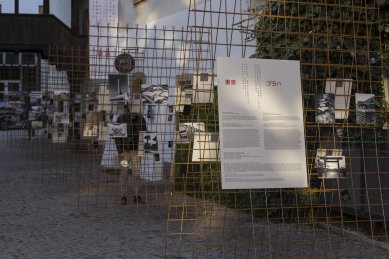
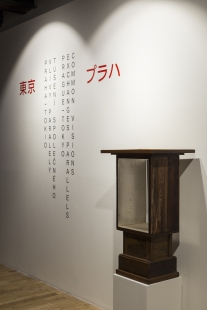
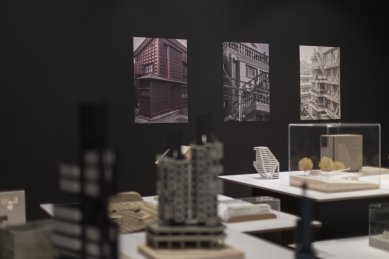
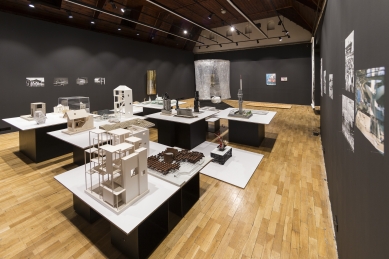
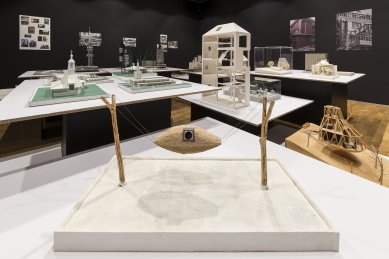
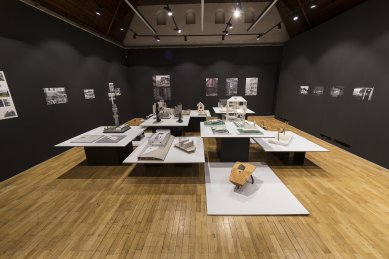
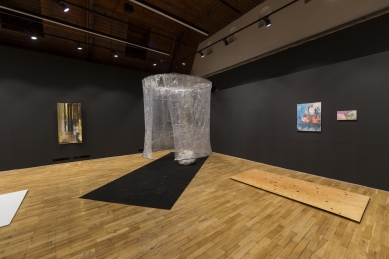
0 comments
add comment










